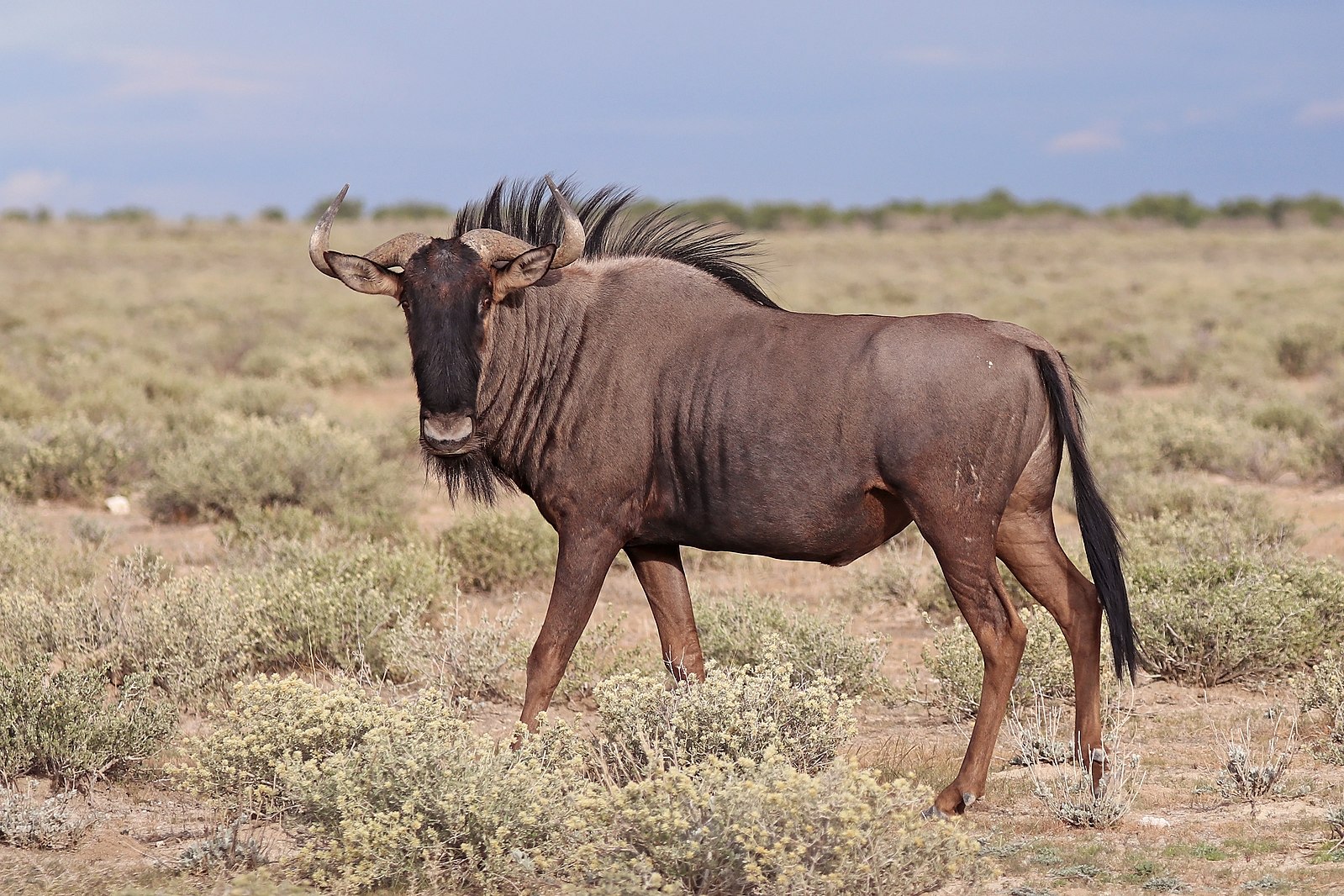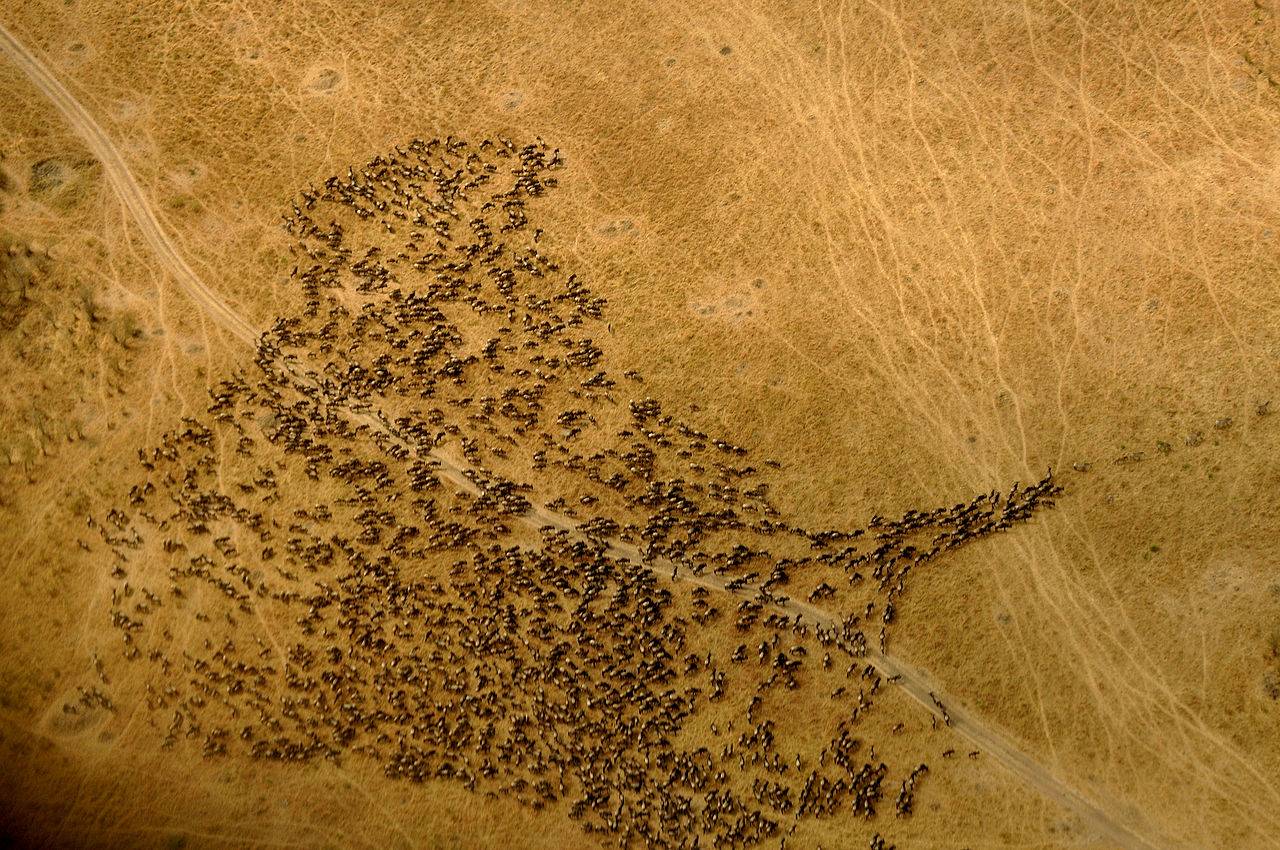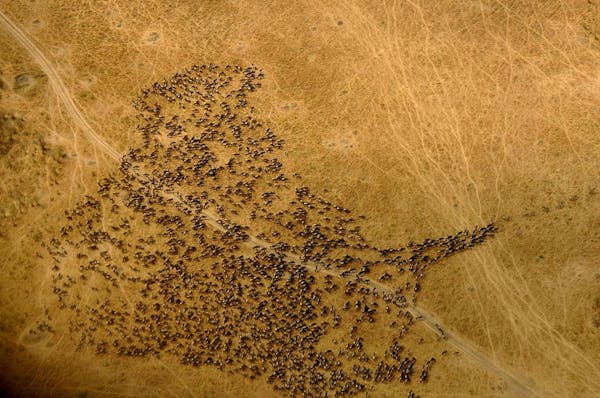How the blue wildebeest restored the Serengeti ecosystem
- Nature Conservation
- Land Conservation
- Species Rewilding
- Wildlife
- Mammals
- Grasslands
- Sub-Saharan Afrotropics
- Afrotropics Realm
One Earth's “Species of the Week” series highlights the flagship species of each of the 844 unique ecoregions contained within Earth’s bioregions.
Spanning across northern Tanzania is 30,000 square kilometers (12,000 sq mi) of rich grasslands. The name Serengeti is said to come from the Maasai people meaning "endless plains." Among the gazelles, zebras, and antelopes that call this place home, there is one grazer that rules them all, the blue wildebeest. As a keystone species, blue wildebeests are essential in keeping this African prairie a carbon sink and their recent recovery is one of the greatest success stories in conservation.
Also known as the common wildebeest, white-bearded wildebeest, white-bearded gnu, or brindled gnu, the blue wildebeest is one of the two species of wildebeest. Their name comes from the bluish-gray to grayish-brown color of their coat. Males are larger and darker than females with a height of 1.45 meters (4.8 ft) and weighing up to 290 kilograms (640 lb). Both sexes have large, curved horns, muscular shoulders, and distinct, broad muzzles.

Breeding begins at the end of the rainy season when males use their horns to establish dominance and show the onlooking females their strength. A single calf is born after 8.5 months. Male offspring stay with their mothers for an additional eight months before joining a juvenile herd and eventually creating bachelor herds. Female calves stay with their mothers throughout their lives.
These bands of female wildebeests are in control of leading the entire herd towards new grasslands. From July to early October, this movement is known as the Great Migration. The population of 1.5 million blue wildebeest is joined by over 700,000 species of other grazers as they move across the Serengeti in search of new food sources. This migration is what keeps the Serengeti ecosystem healthy, thriving, and functioning as a massive carbon sink.

Image credit: Creative Commons, T R Shankar Raman
In the mid-20th century, the blue wildebeest population was decimated to just 300,000 individuals because of viruses spread from livestock. Ground vegetation began to overpopulate which eventually led to wildfires that destroyed 80% of the ecosystem annually. This led to a net release of carbon dioxide into the atmosphere, making the Serengeti a producer of greenhouse gases. When disease management efforts helped the wildebeest population recover back to their historic levels of over 1.5 million, the landscape was brought back into balance and restored to being a natural storage unit for CO2 in less than a decade.
Today, the blue wildebeest population is stable and considered of least concern by The International Union for Conservation of Nature (IUCN). Along with the reintroduction of wolves into Yellowstone National Park, the rewilding of wildebeests in the Serengeti is considered one of the most successful rewilding stories of our time. Rewilding efforts can not only save species and restore habitats - it is also an essential solution in the fight against the climate crisis.
Interested in learning more about the Afrotropics bioregions? Use One Earth's interactive Navigator to explore bioregions around the world.
Launch NavigatorYou might also like
-
%20shutterstock_136124996.jpg?auto=compress%2Cformat&h=600&w=600)
Six global success stories on how rewilding key species can rebalance ecosystems
From beavers in the UK to bison in the Great Plains, here are six stories that demonstrate the power of rewilding in restoring the health of ecosystems around the world.
-

Animate the Carbon Cycle: Scientists call for a decade of rewilding to help achieve the 1.5°C target
A high-level group of 60 scientists, economists, and experts have launched an initiative, supported by One Earth, to establish the technical potential of ecosystem restoration and rewilding to help in rebalancing the global climate system.


